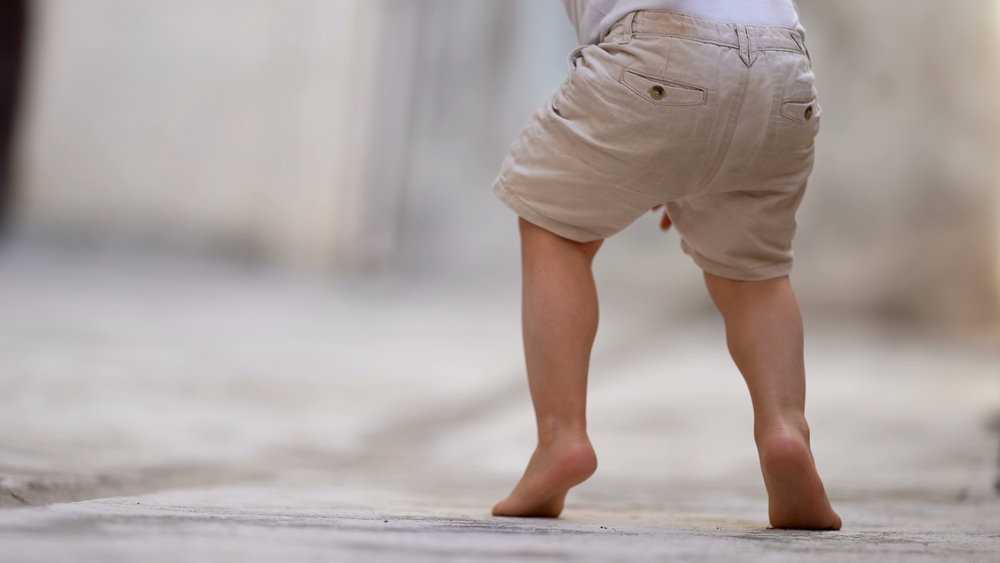Toe walking in children can be caused by neurological, orthopedic, or psychological disorders. However, most children who walk on their toes are healthy. Idiopathic toe walking is a diagnosis given to healthy children who persist in walking on their tiptoes after they typically achieve a heel‐toe gait. It occurs in 5% to 12% of healthy children.
A normal gait pattern is made up of 3 distinct phases: initial heel strike, mid-foot contact, and toe‐off. During the development of heel‐toe gait, some children walk on their tiptoes. However, toe walking is not a mandatory stage that all children progress through. A normal heel strike pattern is present in most children by the age of 18 months.
Several theories exist as to why healthy children continue to toe-walk. These include a hereditary genetic disorder, sensory processing difficulties, and the use of infant walkers. It is also believed that some children have the ability to walk with a heel strike, but prefer to walk on their toes. Also, children who demonstrate toe walking gait often have limited ankle range of motion.
Common Treatments for Idiopathic Toe Walking
Typically, medical treatment begins when toe walking persists beyond the age of 2 or 3 years. The consequences of untreated toe walking are unclear. It is believed that untreated toe walking leads to a higher chance of falling. Also, it may have social or cosmetic consequences for developing children.
Toe walking may limit a young child’s participation in physical activity, recreation, and sport. This could have profound effects on their health and fitness throughout their lifespan. Therefore, most medical professionals agree that early identification and treatment are best for children who exhibit toe walking.
Here is a list of the most common treatments:
- Stretching exercises for the ankle and Achilles tendon
- Motor control intervention to train the proper gait pattern
- Ankle-foot braces
- Foot orthotics and footwear modifications
- Serial casting to lengthen the Achilles tendon
- Intramuscular Botox injections into the calf muscles
- Surgery to lengthen the Achilles tendon
Pediatric Physical Therapy Made Fun for Children

Children love fast-paced treatment sessions with their pediatric physical therapist. Pediatric physical therapy sessions include brightly colored equipment (balls, etc.), fun games, and competitive challenges. Your child will not even realize they are exercising.
For example, no 4-year-old wants to stand in one place to stretch their calf muscle for 3 minutes. But, time will fly while their therapist plays a game of cards with them while they stretch.
Scooter races and obstacle courses are great ways to encourage heel contact without your child even realizing they are doing it. All of these activities retrain your child’s nervous system to walk with a heel-toe pattern.
See a Pediatric Physical Therapist for Help with Toe Walking
Retraining children how to walk is not a quick fix. It involves weekly physical therapy sessions and regular exercise at home to achieve the best results. However, most children with idiopathic toe-walking respond very well to conservative treatments.
The pediatric physical therapists at BSR make treatment sessions fun and effective. After your child’s therapy, they will show an improved gait pattern and be eager to enjoy life with friends and family. To get started, call our Little Egg Harbor office to schedule an initial evaluation with a pediatric physical therapist.

